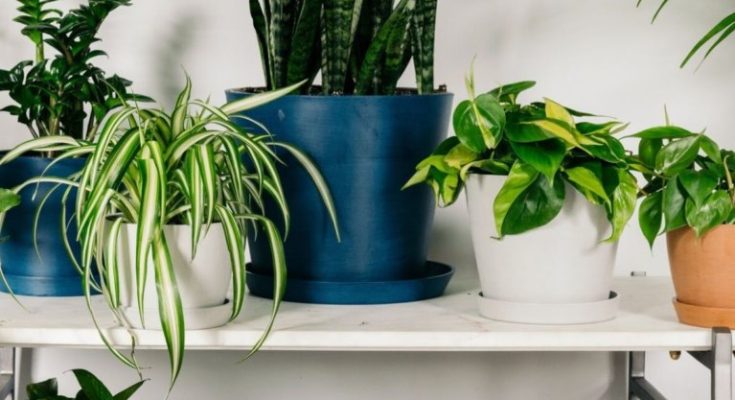From watering, fertilizing, and repotting to fighting off diseases and pests, there’s a lot to monitor when it comes to raising happy, healthy indoor plants. But most plant issues stem from one thing (or lack thereof): light. Light enables plants to photosynthesize, which creates the sugars they need to grow and thrive. It’s no exaggeration to say that light is a plant’s lifeblood—no matter what their preferred environmental conditions, they quite literally can’t survive without it.
If you’re concerned about the light conditions in your home or apartment, you’ve come to the right place. Below, read up on all things indoor plant lighting, from photosynthesis 101 to plant grow light bulbs and everything in between.
The Importance Of Indoor Plant Lighting
To reiterate the above statement, plants absolutely need some kind of light source to grow. While some plants can tolerate extremely low-light conditions (we’re looking at you, ZZ plant), any claims that a plant can thrive without any light are simply false. While some are able to adapt or survive for a short amount of time, they will not thrive, especially in the long run.
In the words of Darryl Cheng, engineer, author of House Plant Journal, and inventor of a light meter app, “understanding light is the best way to truly understand what your plant is going through.” He shared with Bloomscape that “the correct lighting is what plants require to function. The people you think have a ‘green thumb’ are simply the people with the most windows.”
Photosynthesis 101
As National Geographic explains, “photosynthesis is the process by which plants use sunlight, water, and carbon dioxide to create oxygen and energy in the form of sugar.” Basically, plants capture energy from the sun to produce oxygen and create glucose. Plants use glucose to grow and reproduce, and excess reserves are stored in the leaves, stems, and roots. In other words, more light equals more photosynthesis, which equals more growth and vitality.
Your Guide To Indoor Plant Lighting
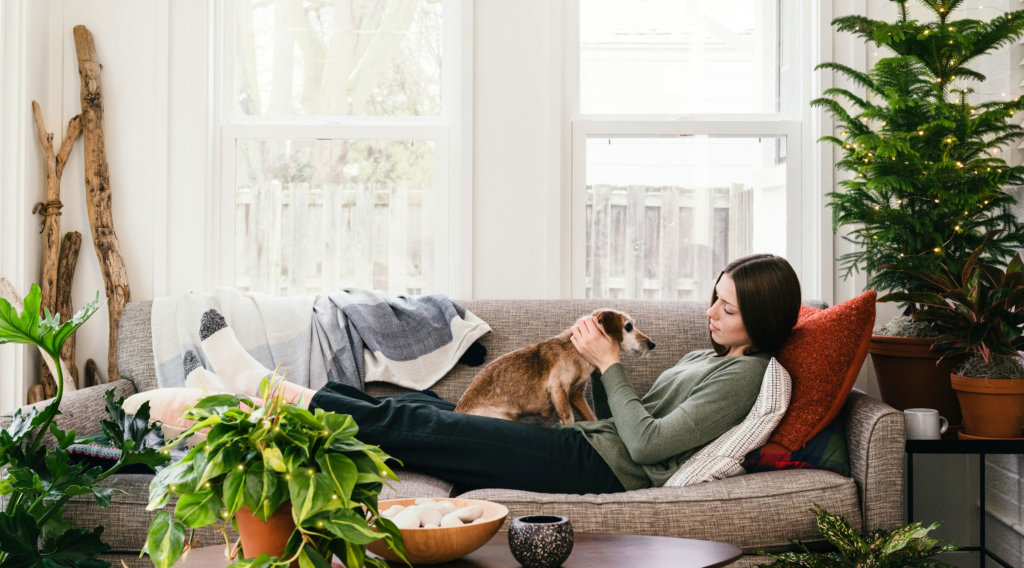
Of course, various types of plants prefer different lighting conditions based on their natural habitat. Succulents and cacti, for example, are native to deserts and extremely dry climates and therefore love hours of sunlight and minimal watering. Tropical plants like ferns, bird of paradise, and philodendrons, on the other hand, prefer bright, indirect light and more frequent watering in order to mimic a rainforest environment. Here’s how to position different plants for each type of lighting condition.
Direct light
Plants native to wide, open terrains like cacti, herbs, and many succulents fall into this category. Generally it’s best to aim for six or more hours of direct sun, meaning the sun’s rays are hitting the plant’s leaves, each day. The type of placement to obtain this lighting is somewhat limited:
– South- or southwest-facing window: Place your plant within a few feet of the window where it can soak up as much direct sunlight as possible.
– West-facing window: Though it’s not ideal, a west-facing window is the next best option. Place your plant as close to the window as possible to maximize the direct light it receives in the late afternoon and early evening.
Bright indirect light
Plants that gain height as they grow, like climbing vines, small trees, and cane-type plants generally enjoy bright indirect light. Many houseplants that fall into this category are native to tropical rainforests, where they grow high enough to gather bright light but are still protected from direct sun thanks to larger trees overhead. A few examples of plants that enjoy this environment are Heartleaf Philodendron, Dracaena, and most Ficus species. There are many options to recreate this in your home:
– North-facing window: Place your plant very close to the window.
– East- or west-facing window: Place your plant within a few feet of the window. It will receive some direct sunlight either in the morning or late afternoon, which is OK since the sun’s rays are far less intense when it’s low in the sky.
– South- or southwest-facing window: Place your plant a few feet back, where it won’t receive direct sun. Or, you can place it close to the window and hang a sheer curtain to filter the direct sun.
Medium indirect light
Many low-growing tropical houseplants like ferns, calatheas, and pothos do great in medium indirect light. These types of plants have evolved to thrive on a forest floor, where light is abundant but highly filtered through the canopy of trees, vines, and shrubs overhead. The guidelines to recreate this in your home follow the patterns of bright indirect light but allow placement farther from a window:
– North-facing window: Place your plant within a few feet of the window.
– East- or west-facing window: Place your plant within six to eight feet of the window.
– South- or southwest-facing window: Place your plant within eight to twelve feet of the window.
Low Light
Some hardier plants that prefer indirect light are also adaptable to low light. A few examples of plants that can tolerate low light include the ZZ plant, pothos, and snake plant. If you have small windows, windows that are obstructed by buildings or trees, or are dealing with only artificial lighting, you’ll want to seek out plants in this category. These types of plants actually prefer brighter conditions, but can tolerate less-than-ideal conditions such as low light. Tolerating low light means the plants will hold their shape and color for a long time, but will grow very slowly and probably not thrive. Keep in mind that plants in low light will not need nearly as much water, since they are able to photosynthesize far less.
Window Direction Matters
North-facing windows
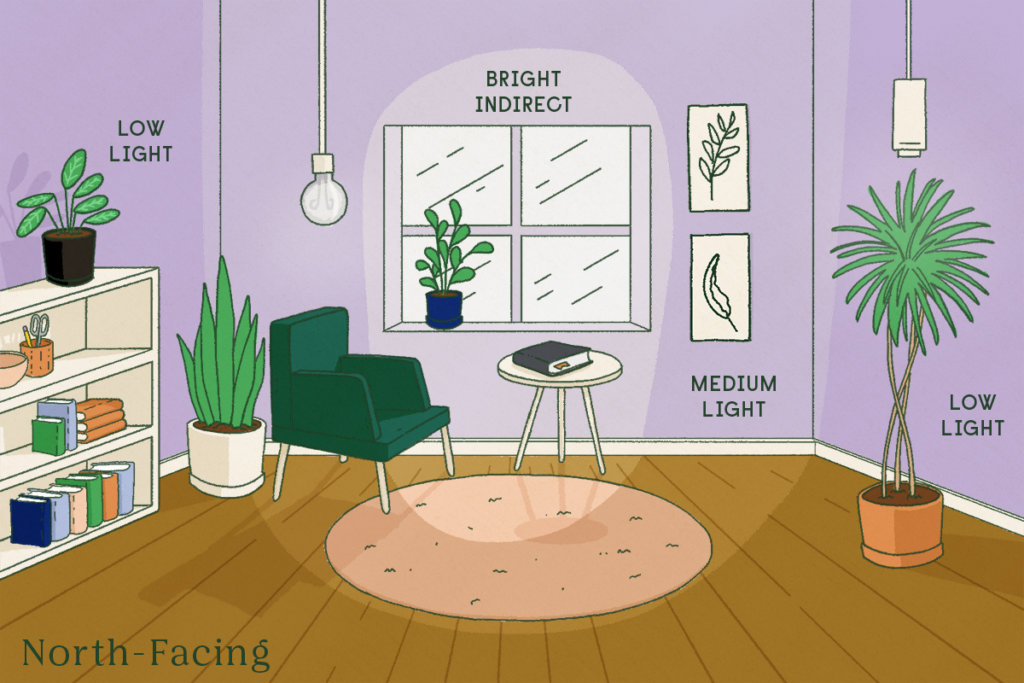
North-facing windows provide indirect light that is suitable for indirect and low light plants. No direct sunlight will come from this direction.
South-facing windows
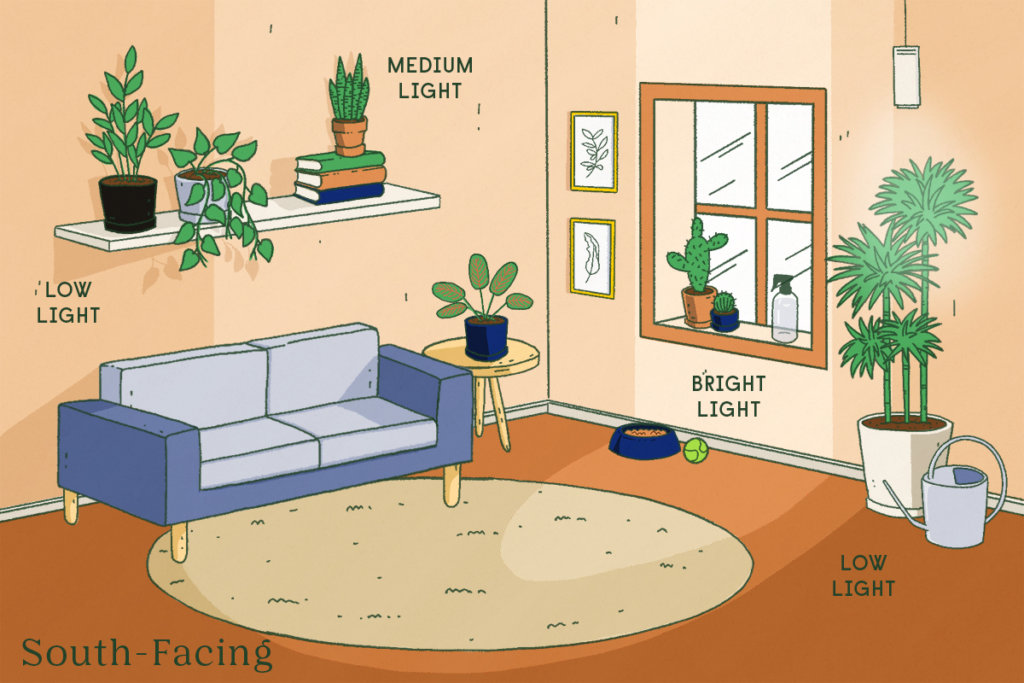
South-facing windows receive the most direct sun per day. South-window sunlight is also the most intense, since the sun is at a high angle in the sky. South-facing windows are the best option for plants that prefer direct sun, like cacti, succulents, and your indoor herbs and vegetables.
East-facing windows
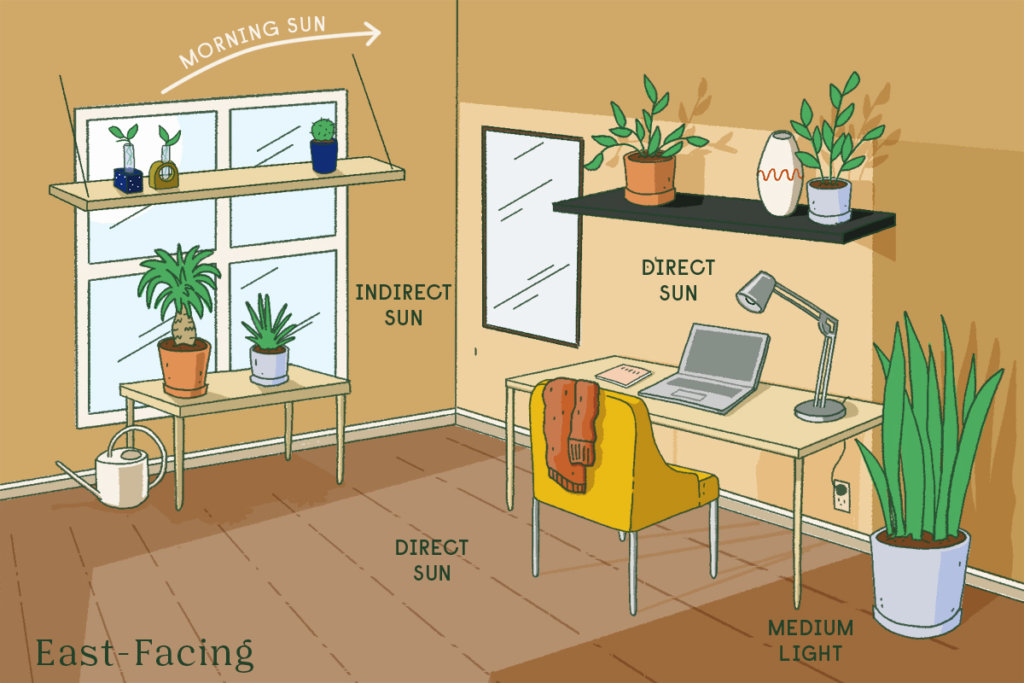
East-facing windows will receive a few hours of direct morning sun, and indirect light the rest of the day. East-facing windows are a great option for most of your tropical plants that love bright or medium indirect light.
West-facing windows
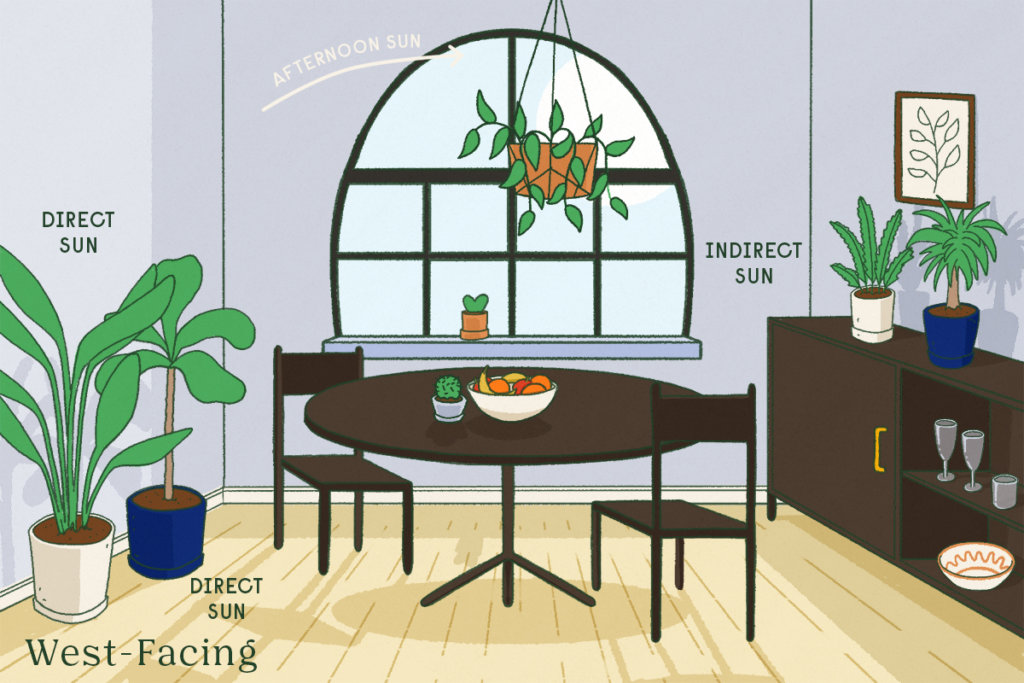
West-facing windows receive indirect light for most of the day, with a few hours of late afternoon/early evening direct light. The afternoon sun can be a bit stronger than morning sun, so west-facing windows are a great option for plants that like bright indirect light. Plants that like direct sun can also do well here, as long as they are placed very close to the window.
Is Your Plant Getting The Right Amount Of Light?
Fortunately, your plant will tell you if it’s getting too much or too little sunlight. Those with not enough light will grow slowly, if at all, and sport sickly, light green leaves that seem to reach for the sun. You might even notice your plant’s stem “stretching,” or growing long and spindly, in its attempt to get closer to a light source. On the other hand, plants exposed to too much sunlight may begin to turn purple or red, have brown tips and edges, or develop sun-scalded spots that look bleached or white.
When to consider a grow light
If you’re concerned that your plants aren’t getting enough light in your living space, an LED Grow Light can provide supplemental light. Grow lights can be great for people dealing with the low-light situations outlined above, or for those living in areas with long, overcast winters. LED light bulbs produce a specific photosynthetic light that mimics the light of the sun and allows plants to produce the necessary sugar necessary for them to grow and thrive. LED grow lights are relatively affordable, long-lasting, and easy to use. For our complete guide on grow lights, read How Grow Lights Take You
